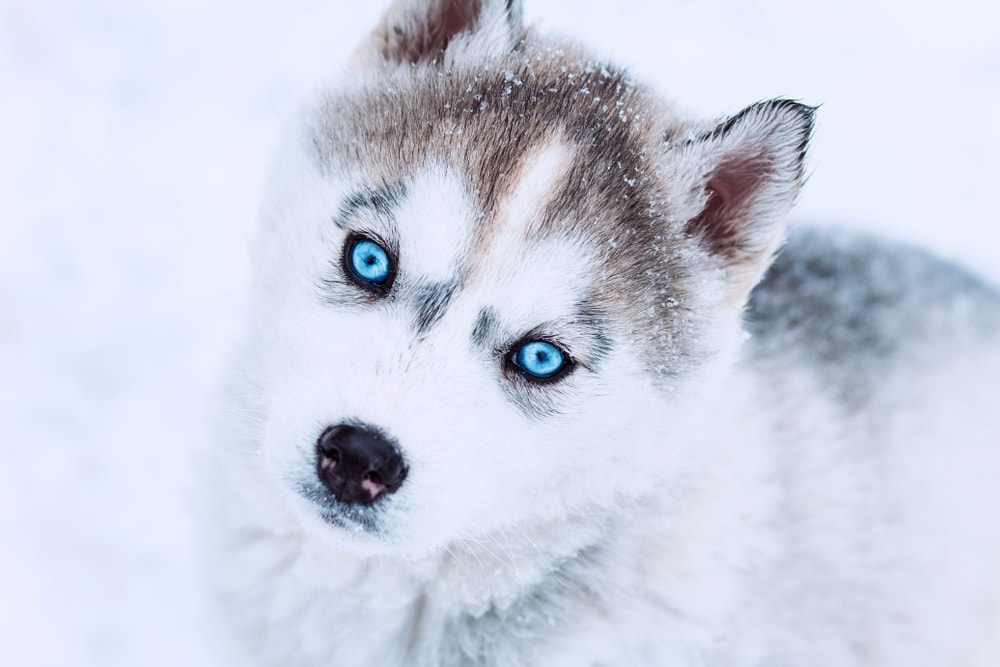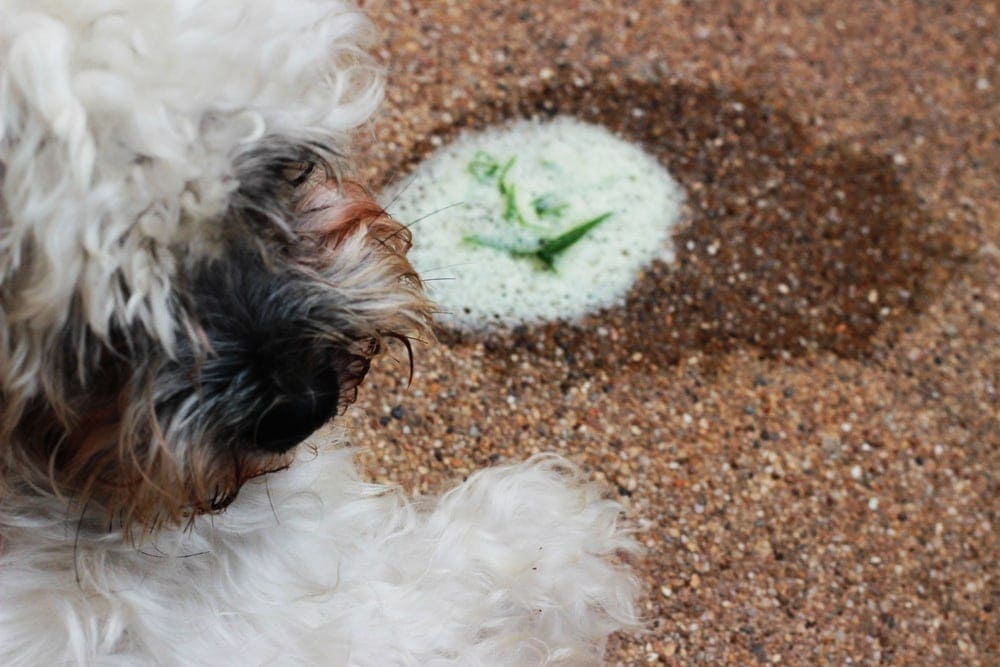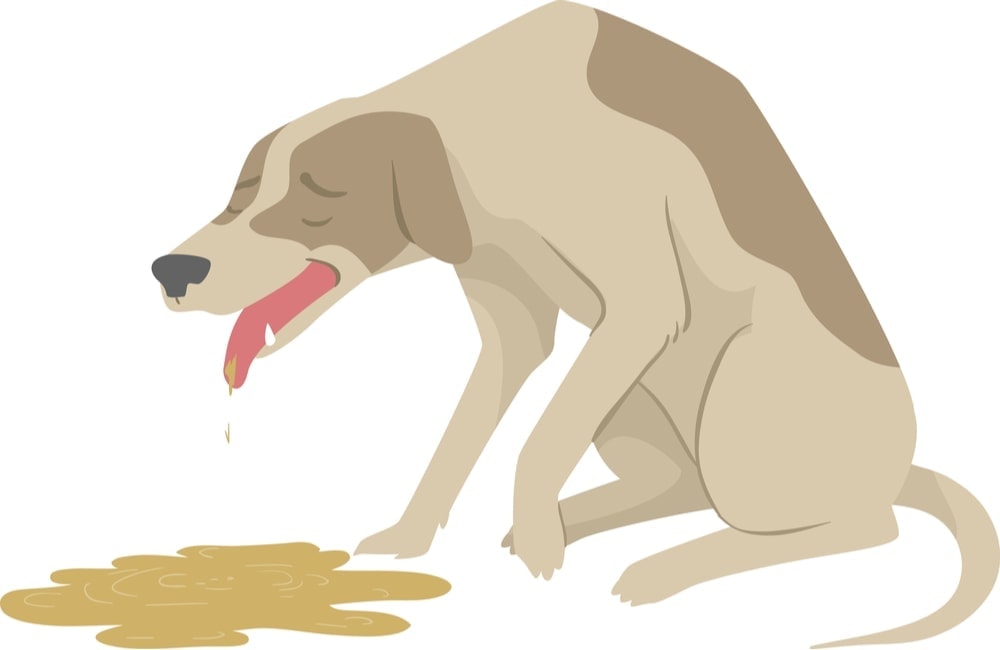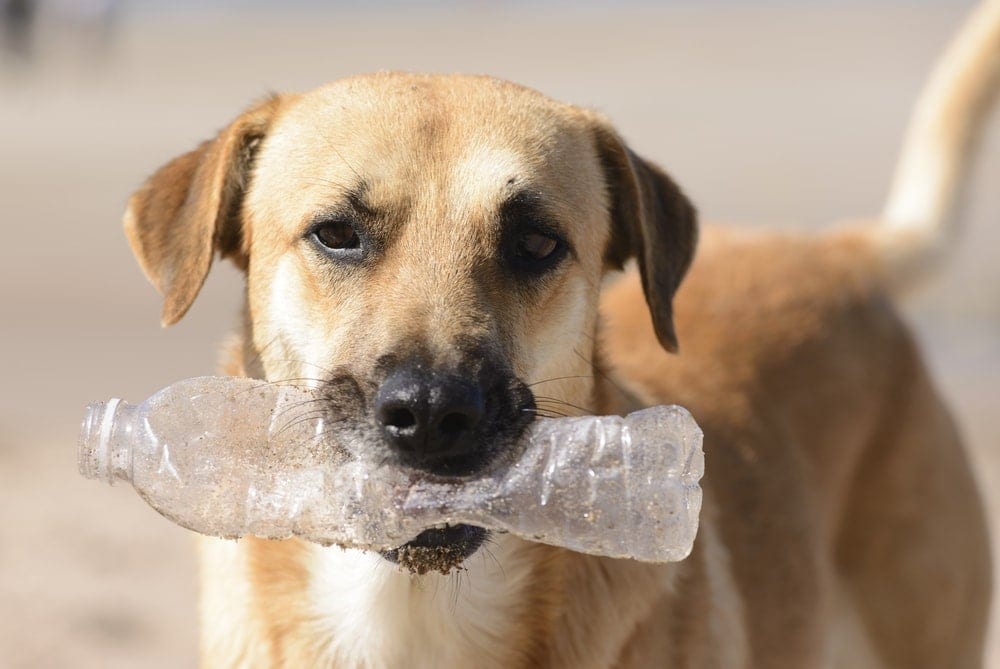Puppies are rarely born with the same eye color as they have when they are fully matured. If you have a new puppy, you will definitely find this information interesting.
In this article, we’ll discuss the development of doggies’ eye color from when they are just born till when they are adults. You will know why puppies are born with blue eyes, what is heterochromia and when to expect a puppy’s eyes to change color.
Most dogs have brown eyes it is the most common eye color. Brown can come in different shades like amber, hazel, or gold.
When Will I See My Puppy’s Permanent Eye Color?
You should start seeing the puppy’s eyes change color about 3-4 weeks after it is born. But the final color will come later, after 9-16 weeks. Their eyes slowly darken in color and usually turn brown except for certain breeds.
It actually sometimes takes some dogs as long as three months for their permanent eye color to develop. Some dogs end up with a lighter shade of brown in their eyes, while others have a darker brown coloration.
Born into Blue
Puppies do not even open their eyes until they are about two weeks old. This is the period of time in which they begin nursing from their mother. All puppies are born with blue eyes, which may appear a little blurry at first. We see bleu color because melanin is not developed yet in little pup’s eyes. They seem even bluer because of the refraction and reflection of light in combination with the lack of melanin in the young body.
There are some puppies that have eyes that are a dull blue, while others are more brilliant. The reason that they all have blue eyes is that melanin has not yet started being produced. This chemical travels to their irises, giving their eyes a permanent color.
Developing Vision
As your puppy gets older and its vision becomes sharper, its eye color begins to change. Once they have reached full maturity, their vision is as good as it will ever be. You should be able to notice a subtle change in their eye color from week to week.
If your dog doesn’t open its eyes by two weeks of age, you should take it to the veterinarian. There could be something wrong with your dog that requires medical intervention. Some dogs are born with eye problems, though it is fairly rare. Your vet will be able to tell you if they are just late bloomers or if there is an actual problem.

Dogs with Permanently Blue Eyes
Some breeds of dogs tend to have blue eyes their whole life, including Siberian Huskies and Australian Shepherds. While this is usually not the case with most breeds, it is a possibility with pretty much any dog. Genetics plays a primary role in determining what color a dog’s eyes are going to be as a fully matured adult.
It is possible for dogs to have other eye colors, including amber and hazel. For example, Chocolate Labs often end up with amber-colored eyes. This is something that is usually determined by the breed.
Can a Dog’s Coat Predict Eye Color?
Dogs that have a liver coat color are more likely to eventually develop amber or brown eyes, but they are still blue as newborns. Merle-coated dogs often keep their blue eyes, though they usually get progressively brighter as the dog develops to full maturity. This is as good of a way of predicting your dog’s eventual eye color as anything.
There are some dogs that inherit blue eyes as a gene that has nothing to do with the color of their coat. It is important to keep in mind that this is by no means a definitive way to tell which color eyes your dog is eventually going to have. It can, however, be a good indication in lots of cases.
Merle gene
If your dog has dominant light patches of fur or is completely white that’s called merle coats. The chances that they will keep their blue color are higher because of the fact that their cells are unable to develop pigmentation. These types of dogs carry the merle gene. Two dogs who carry the merle gene should not b allowed to have puppies together because it can cause horrible health issues like blindness, deafness, etc. However, not all dog’s eye color depends on their coats and merle genes. For example, Siberian Huskies have blue eyes because of a genetic mutation completely unrelated to their furs.
There are 17 breeds that can carry merle genes:
- Australian Shepherd
- Border Collie
- Smooth Collie
- Dachshund
- Great Danes
- Cardigan Welsh Corgi
- Shetland Sheepdog
- Chihuahua
- Koolie
- Pitt Bull
- Beauceron
- Pomeranian
- Catahoula Leopard Dog
- Pyrenean Shephard
- Old English Sheepdog
- Hungarian Mudi
- Cockapoo
Heterochromia
Still, if your puppy’s eye color changes color when they are already matured, it is best to get their eyes checked by your vet because it can be heterochromia. There are three different types of this sickness:
- Heterochromia iridis or complete heterochromia: one of the two pup’s eyes is an entirely different color than the other.
- Sectoral heterochromia or partial heterochromia: when the iris is only partially blue.
- Central heterochromia: In this case, the blue color radiates throughout the pupil while mixed with another color in a spiked pattern.
There are some of dog breeds that are more likely to develop heterochromia:
- Australian Shepherds
- Australian Cattle dogs
- Border Collies
- Dachshunds
- Dalmatians
- Chihuahuas
- Shih Tzus
- Siberian Huskies
- Great Danes
- Shetland Sheepdogs
Glaucoma in Dogs
As we stated above, some dogs can be born with certain eye problems, including glaucoma. While this is a condition that usually develops over time, puppies can also have it. The dog’s corneas will appear cloudy or bloodshot.
If you notice these symptoms, it is important that you get to your veterinarian as soon as possible. Surgery is often needed in this case, and it is often successful, especially with younger dogs.
There is also a chance that your dog could have cataracts, which can be just as serious as glaucoma. This is another medical issue that usually requires surgery to correct. It almost always develops fairly slowly over time as the dog ages.

Heterochromia
While it is somewhat rare, there are done that have two eyes with two completely different colors. This is called heterochromia, and it is perfectly harmless. It is caused by an imbalance in melanin, which results in a very conspicuous difference in eye color. One eye is usually very dark, while the other is much lighter.
There are certain breeds that are predisposed to heterochromia, including Siberian Huskies and Louisiana Catahoula Leopard Dogs.
This can be a sign of a serious eye problem that needs to be addressed right away. If you notice your dog developing different colored eyes, you should get them looked at just to be safe. This is one of the reasons why it is so important to get a checkup for your dog shortly after it is born.
Sometimes the difference in eye color with dogs that have heterochromia is subtle. They might have one eye that is light brown while the other is slightly darker brown.
Conclusion
- When dogs are born, they do not open their eyes until they are about 1 to 2 weeks old.
- All puppies have light blue eyes when they are born due to the lack of melanin going to the irises.
- It could take as long as three months for you to see your dog’s permanent eye color fully develop.
- There are certain breeds that are more likely to have blue eyes all their life, including the Siberian Husky.
- A dog’s coat can be a predictor of eye color, but not always. Dogs with a liver colored coat often develop amber eyes.
- Some dogs are born with heterochromia, which causes their eyes to be two completely different colors. Sometimes this difference is fairly subtle.
- It is very important for you to get your dog’s eyes looked at shortly after it is born. This will help catch any eye problems they might have, such as glaucoma or cataracts.
Sources:
- Eyes of a Dog – Washington State University
- Puppies blue color forever? – Healthy Paws
Frequently Asked Questions:
When can you tell what color a puppy’s eyes will be?
It is impossible to see puppy’s permanent eyes color until it is 9 to 12 weeks old. The only way to identify it is to see parents yeys color but even with these knowledge you can be wrong because genetics love to joke sometimes.
What is the rarest eye color in dogs?
Most of the dogs have dark brown, brown or hazel eye color. Some breeds has more rare color – blue. But the rarest color in the canine world is green. You can meet such colored green eyes as American pit bull, pomeranian huskey, English springer spaniel, border collie, weimaraner, dachshund, or australian shephard dog.
What does it mean if a dog has green eyes?
If your pup has green eyes it means that it is a normal dog with green eye color. Nothing to worry about and better enjoy beauty of your canine friend. But this color contain less melanin so sometimes they may suffer from increased intraocular pressure (glaucoma).











